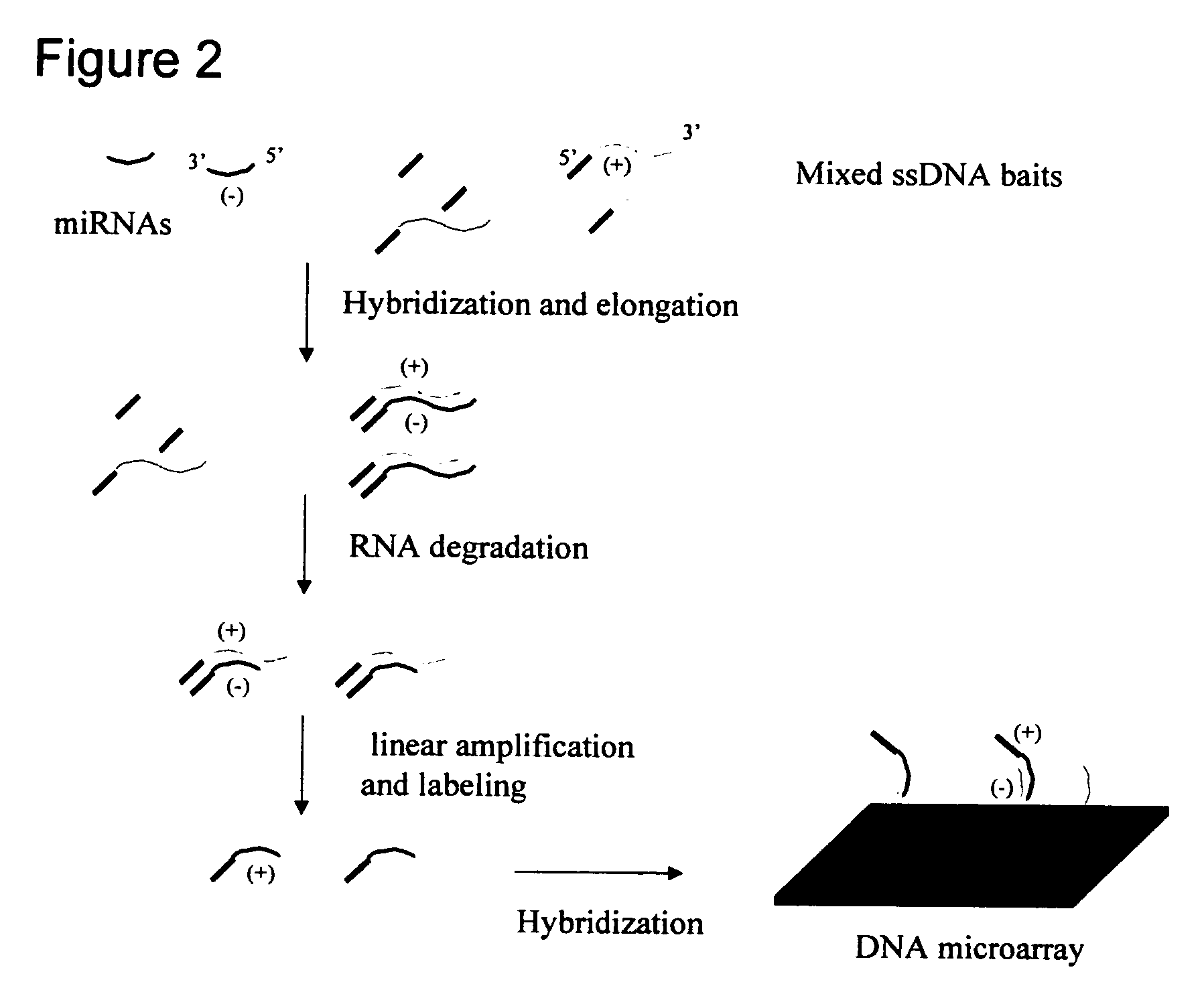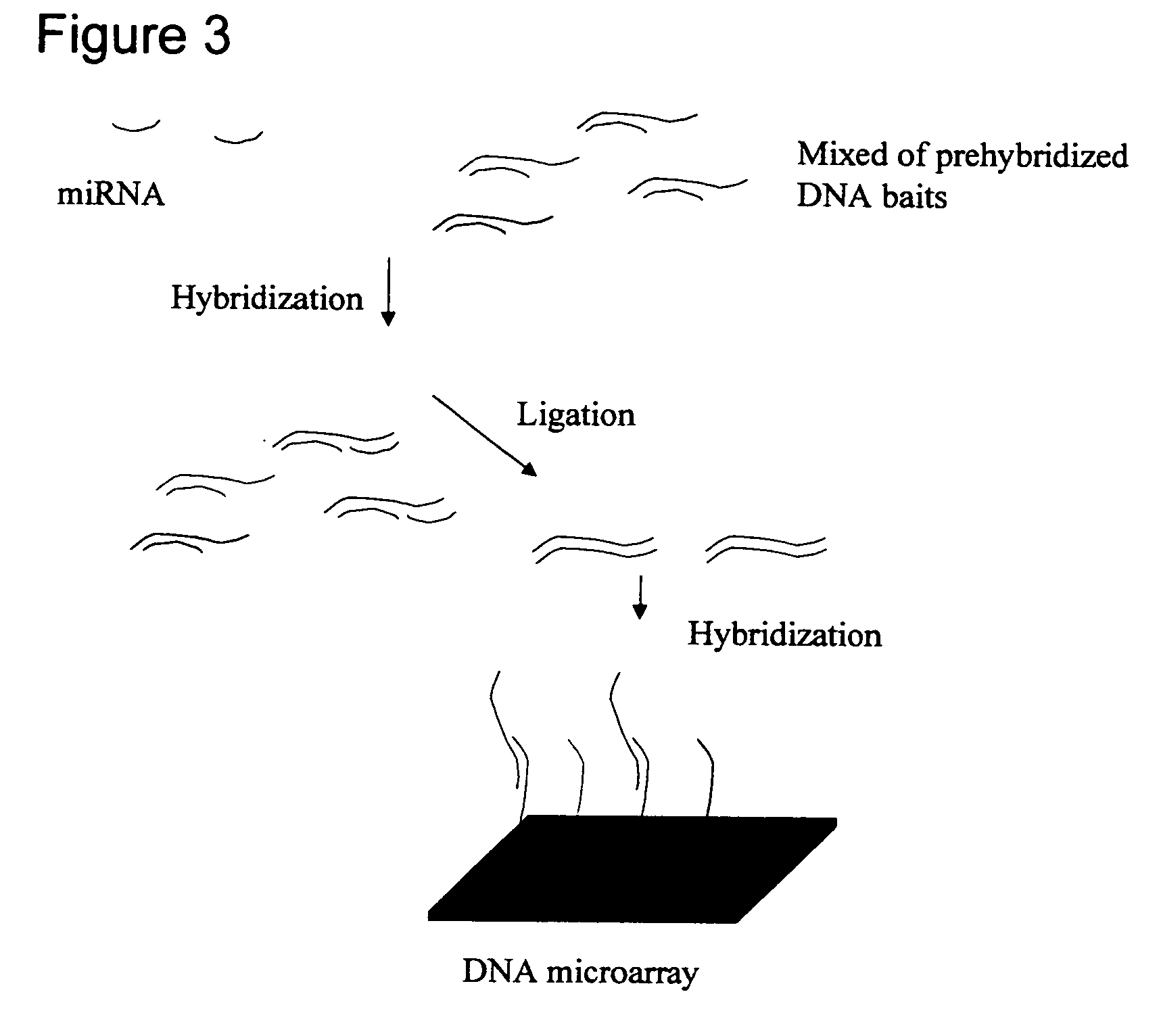Method for the determination of cellular transcriptional
- Summary
- Abstract
- Description
- Claims
- Application Information
AI Technical Summary
Benefits of technology
Problems solved by technology
Method used
Image
Examples
example
[0106] The experiment is performed as schematically described in FIG. 1.
miRNA Extraction:
[0107] miRNAs are extracted from the a fresh (or frozen) pellet of 102 to 107 cultured cell or tissues using the mirVana miRNA isolation procedure variant for isolation of RNA that is highly enriched for small RNAs (Ambion). The sample was disrupted in a denaturing lysis buffer and subsequently extracted in Acid-Phenol:Chloroform (Chomczynski and Sacchi, Anal. Biochem. 162 (1987), 156-159) ⅓ volume of 100% ethanol is added to the aqueous phase recovered from the organic extraction, mixed and passed through a glass filter cartridge (using centrifugal force). After this step, the filtrate was further enriched by adding ⅔ volume of 100% ethanol, mixed and applied on a second glass filter cartridge. The small RNA molecules remain trapped on the glass filter and are washed three times with a 45% ethanol solution. The RNA is then eluted with nuclease-free water and recovered in a collection tube.
...
PUM
| Property | Measurement | Unit |
|---|---|---|
| Elongation | aaaaa | aaaaa |
| Cell death | aaaaa | aaaaa |
| Elongation | aaaaa | aaaaa |
Abstract
Description
Claims
Application Information
 Login to View More
Login to View More - R&D
- Intellectual Property
- Life Sciences
- Materials
- Tech Scout
- Unparalleled Data Quality
- Higher Quality Content
- 60% Fewer Hallucinations
Browse by: Latest US Patents, China's latest patents, Technical Efficacy Thesaurus, Application Domain, Technology Topic, Popular Technical Reports.
© 2025 PatSnap. All rights reserved.Legal|Privacy policy|Modern Slavery Act Transparency Statement|Sitemap|About US| Contact US: help@patsnap.com



